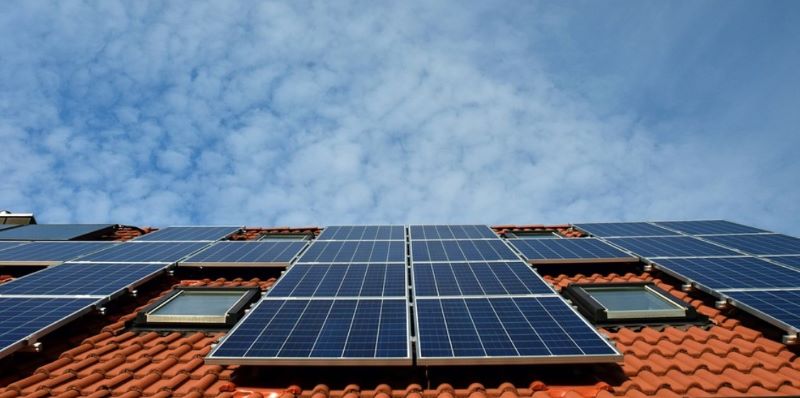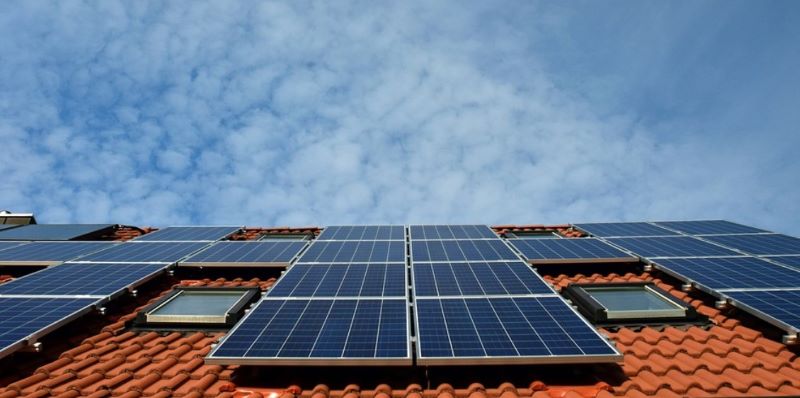The Importance of Solar Energy in Human Life
By Neha Bisht
Converting energy resources to a useful power source such as electricity is the biggest achievement made by humans. Human life is almost unimaginable without electricity. Electricity plays a fundamental role in our daily life due to its significant importance and widespread use. A plethora of natural energy resources are available on Earth such as solar, wind, geothermal, fossil fuels, ocean energy, etc. Among these energy resources, solar energy is a long-persisting energy source. Solar energy is a renewable resource, and the energy can be harnessed without depletion. There are various ways to convert solar energy to useful purposes such as solar heaters, solar panels, solar cookers, and more. Solar panels are one of best sustainable and renewable energy source to provide 24/7 electricity without emitting greenhouse gases or air pollutants, unlike fossil fuels. Solar power helps in reducing our carbon footprint, mitigating climate change, and improving air quality, leading to a cleaner and healthier environment for both present and future generations. Solar energy provides individuals and communities with the opportunity to generate their own electricity. By installing solar panels on rooftops or utilizing solar farms, people can reduce their reliance on centralized power grids and imported fossil fuels, thereby achieving energy independence, and enhancing energy security. Solar energy can easily reach areas that are not easily accessible by traditional power grids. Remote communities or regions with limited infrastructure can benefit from solar power systems, which can provide electricity for lighting, communication, education, healthcare, and other essential services. Due to continuous solar demand and growth, it also creates numerous jobs.

Solar Panels on House Roofs and Buildings
In Gwangju, many houses and building use solar energy for lighting. Installing solar panels on a house roof or building can be a great way to generate clean and renewable energy while reducing electricity bills. There are still many houses that need to adopt a solar energy system. By choosing solar-powered lighting, Gwangju residents can contribute to a greener and more sustainable environment. Solar energy offers several advantages, including reduced reliance on the grid, energy cost savings, and environmental benefits. For promoting this cleaner energy resource among Gwangju residents, the local government must introduce more awareness programs through communities and companies. Generally, the initial installation cost of solar panels is high; therefore, the government must provide some offset to the initial purchase cost. To install a solar panel on a house roof or building, people need to know the factors that must be considered during installation. First, they should consider the suitability of the roof by checking factors such as roof orientation, angle, shading, and structural integrity. Ideally, roofs that face south and have minimal shading throughout the day are most effective for solar energy production. The number of solar panels and their size need to be determined according to the energy requirement. Solar energy provides long-term financial benefits through reduced electricity bills and potential incentives, or tax credits offered by the government or utility companies. Solar panels generally require minimal maintenance such as regular cleaning to remove dust and debris and occasional inspection for damage or shading issues. Sometimes monitoring systems are also recommended to track energy production and detect any performance issues. People should choose grid-tied residential solar systems. This allows resident to draw electricity from the grid when the solar panels are not producing enough energy and send excess electricity back to the grid when it generates more than is needed. Net metering programs allow people to receive credits for the excess electricity they contribute to the grid.

Solar Panels on Streets and Roads
As you pass through Gwangju’s streets and roads, you can find many solar panels installed along the sideways that provide lighting at nighttime. Solar streetlights are typically installed on poles or structures alongside the road. This approach is known as solar street lighting. The Gwangju city’s government has installed a lot of solar street lighting across the city and even in remote areas of Mudeung-san. I saw a lot of solar panels installed on the way to the mountain to provide lighting for night hikers. It is very hard to provide electricity in remote, hilly, and mountainous regions through traditional grid-powered lighting systems. Installation of solar panels does not require any power grid installation, excavation for burying high-power cords, or cutting down trees to install grids, all of which protects the nearby environment, wildlife, and even human life.
Apart from this, people also need to know about the technical insight of solar street lighting. A solar streetlight generally contains four components: solar panels, a battery storage system, an LED lamp, and a controller. Solar panels collect sunlight during the day and convert it into electricity. This electricity is stored in batteries for use during the night. The LED lamp provides the lighting, and the controller regulates the charging and discharging of the battery and controls the operation of the light. During the installation of solar street grids, design factors such as geographical location, available sunlight, weather conditions, and lighting requirements are normally considered. Proper positioning is important to ensure maximum exposure to sunlight, while regular maintenance is crucial to ensure the system’s efficiency. Though the upfront cost of installing solar streetlights may be higher than traditional grid-powered lighting systems, they offer long-term cost savings. Solar streetlights have longer lifespans and lower maintenance requirements, which further contribute to their cost-effectiveness. Solar streetlights rely on clean and renewable energy, which helps reduce greenhouse gas emissions and dependence on fossil fuels. Additionally, during natural disasters or grid failures, solar energy systems with battery storage can provide a reliable source of electricity. This can help maintain critical services like power emergency response efforts and improve community resilience in challenging situations.

The Author
A native of India, Neha Bisht is pursuing her Ph.D. research at Chonnam National University’s Department of Material Science and Engineering. She loves to meet new people and make new friends. She wants to explore the whole world and learn more about the traditional and cultural differences across the globe. She always likes to contribute to the well-being of society in whichever way she can.







